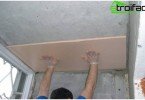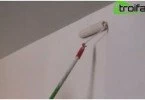What is the best way to remove a tile from a wall?
Tiles must be removed either before repair or for restoration of the surface. It would seem that breaking is not building. However, not everyone knows how to remove the tiles from the wall correctly, without damaging this same wall, and if necessary, leaving the tile intact. Indeed, sometimes jewelry is required, especially when it comes to expensive building materials. Next, we consider all the basic methods for removing tiles from both walls and floors.
Content
- Cladding dismantling tools
- How to remove tiles from the walls?
- How to remove tiles from the floor?
Cladding dismantling tools
- Bit
- Drill with a drill 6 mm
- A hammer
- Putty knife
- Chisel drill
- Protective glasses
- Mask or gauze bandage
- Grout scraper
How to remove tiles from the walls?
In many ways, the choice of a specific dismantling method will depend on what material the tile is attached to the wall, and what result you want to get as a result.
Features of dismantling depending on material
- If the tile was mounted on a cement mortar, and even by competent, responsible craftsmen, then it is unlikely that you can remove it without breaking it. We’ll have to arm ourselves with a hammer drill with a chisel attachment and get ready to work hard.
- If the tile adhered to the wall or floor with glue, then it is highly likely that you will be able to remove it without splitting.
Consider several basic options for dismantling tiles, depending on the results that you want to get as a result:
1. You need to remove only a few cracked tiles, while not hitting the rest. A careful approach will be required: after all, with one careless movement, you can damage the neighboring whole tile, and you will have to remove it too. Sequencing:
- using a special scraper, clean the seams around the tiles requiring replacement;
- in order to loosen the tile to be removed (if it was laid on a cement mortar and kept very firmly on the wall), you can drill holes in it using an electric drill with a drill;
- gently pry the ceramic product with a chisel and start tapping the tool with a hammer, trying to break off the entire fragment; do it very carefully – so as not to damage the wall;
- when the tile can be separated from the wall, proceed to remove the glue.
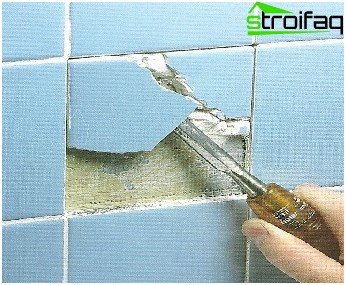
Pry the tile neatly
2. You want to remove the entire tile, without breaking it, to use in the future. This is possible only if it was applied to glue or laid poorly. Sequencing:
- clean tile joints;
- take a chisel with a thin blade or a spatula, carefully bring it under the tile, then start to gently hammer with a hammer;
- the most crucial moment comes when the tile is repelled by 2/3 – you need to try to keep the far corners intact.
Important! Tile down
3. You need to remove all the tiles, while its safety is not required. Sequencing:
- arm yourself with glasses to protect your eyes from the abundance of dust, and cover the surrounding objects and the floor with polyethylene; It is also advisable to use a respirator or gauze dressing;
- take a hammer drill with a chisel attachment: position it at an angle to the tile, separate it from the wall;
- then use a chisel and hammer to remove any mortar from the wall.
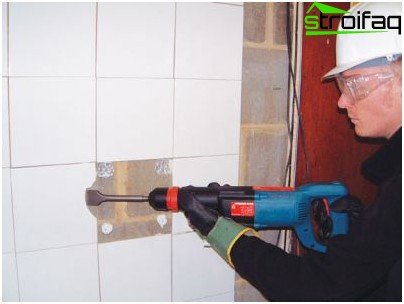
Removing wall tiles using a hammer drill
How to remove tiles from the floor?
There are two ways to do this:
1. Chop 1 tile and then chisel off the rest using a hammer. You can also use a hammer drill..
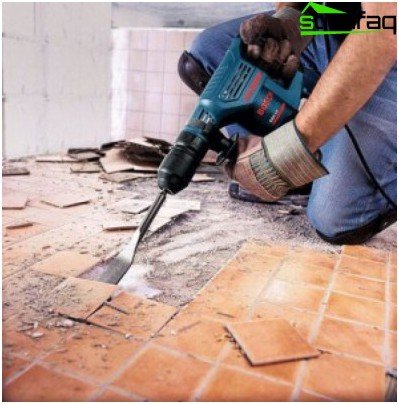
Removing floor tiles with a punch
2. The second method is designed for the case when the tile needs to be saved. What do we have to do:
- take a chisel with the thinnest blade, a hammer, a spray bottle with water;
- moisten the area around the tile with water, wait a while, then moisten again and remove the grout with a scraper;
- attach a chisel to the tile and start tapping around the perimeter of the tile;
- if you feel that the sound in a certain place has become deaf, then the tile begins to recede, you need to carefully remove it;
- clear solution.
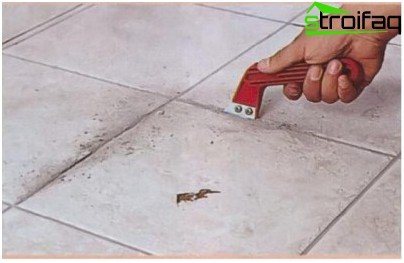
Removing grout from floor tiles with a scraper
Using the simple methods described above, you can remove tiles from walls and from the surface of the floor. Qualification and dexterity will be required only when it is important to preserve the tile, in other cases – only the strength and technology that allows you to most effectively get rid of obsolete coatings.


